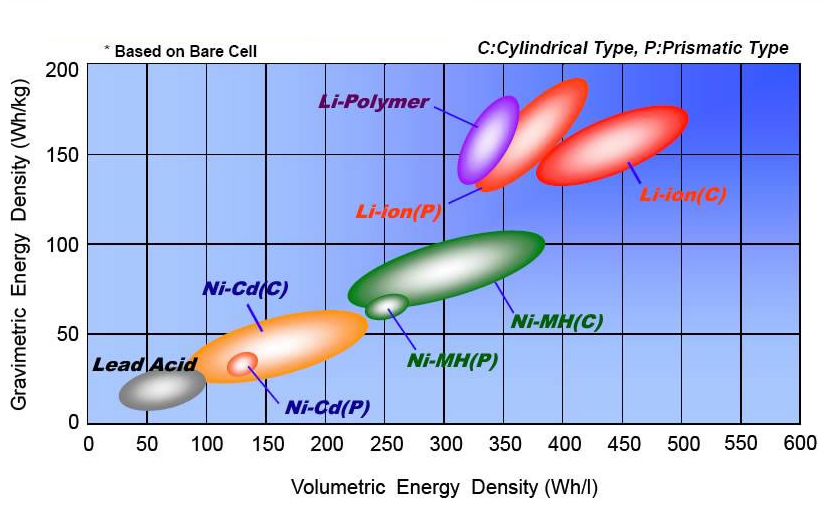Wish they gave the current energy density of lithium batteries for comparison.
Here's a neat comparison of how different chemistries preform. Higher up is higher energy per weight.

Looks like this is pretty old though
It’s a range, but LFP is generally in the 90-160wh/kg and NMC (lithium manganese cobalt oxide) tops out around 275 wh/kg.
It’s not quite double, but doubles the density of most mass manufactured cells. Time will tell if it gets to scale, but it’s a step in the right direction.
Feeling stupid: doesn’t this mean more energy per kilogram is possible with Na cells?
Your next spicy pillow may be a salty pillow
I work in the electronics industry and had never heard the term "spicy pillow". I'll hand in my badge.
https://www.powerbankexpert.com/lithium-battery-spicy-pillow/
There's a Lemmy community for pictures of spicy pillows. It is good.
!spicypillows@lemmy.world
Good to hear. Let's hope it actually works at scale.
Vanadium is relatively abundant, and is produced as a byproduct from steel smelting. This is nice since more carbon intensive steps aren't required.
We're increasingly eating so much salt that at some point maybe The Matrix plot will end up making sense.
I wonder what the machines will use all the microplastics for.
Nanomachines, son!
Here's the original press report https://uh.edu/news-events/stories/2024/december/12202024-canepa-batteries.php
Vanadium, including flow batteries, have never provided useful energy storage solutions, and never will.
The flow application is a scam for vanadium producers to take supply off the market for an already extremely expensive commodity. The advantage is that it does not need recycling to sell it off.
Consuming it in batteries would be ultra expensive batteries. Lithium much more abundant, as is nickel and cobalt if needed
Sodium batteries are thermal batteries, right? So they need turbines to recover the energy into electricity? Or are these chemical sodium batteries?
Chemical. It's in the article:
Battery prototype
The researchers also created a battery prototype using the new material, NaxV2(PO4)3, demonstrating significant energy storage improvements. NaxV2(PO4)3, part of a group called “Na superionic conductors” or NaSICONs, is designed to let sodium ions move smoothly in and out of the battery during charging and discharging, according to a press release.
The material has a unique way of handling sodium, allowing it to work as a single-phase system. This means it remains stable as it releases or takes in sodium ions. This allows the NaSICON to remain stable during charging and discharging while delivering a continuous voltage of 3.7 volts versus sodium metal, higher than the 3.37 volts in existing materials, according to researchers.
I wonder, though, if having to use Vanadium defeats the point of dropping Lithium for Sodium.
Sodium batteries are thermal batteries, right? So they need turbines to recover the energy into electricity?
Are you thinking of concentrated solar, maybe?
I think I was mixing those up with thermal energy storage and thermal batteries.
https://en.m.wikipedia.org/wiki/Thermal_energy_storage
https://en.m.wikipedia.org/wiki/Molten-salt_battery#Thermal_batteries_(non-rechargeable)
Sodium batteries do have a high temperature type, but it does look like they are non rechargeable and do generate electricity directly. The thermal energy storage only stores thermal energy rather than electricity, but they use sand.
Futurology